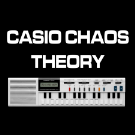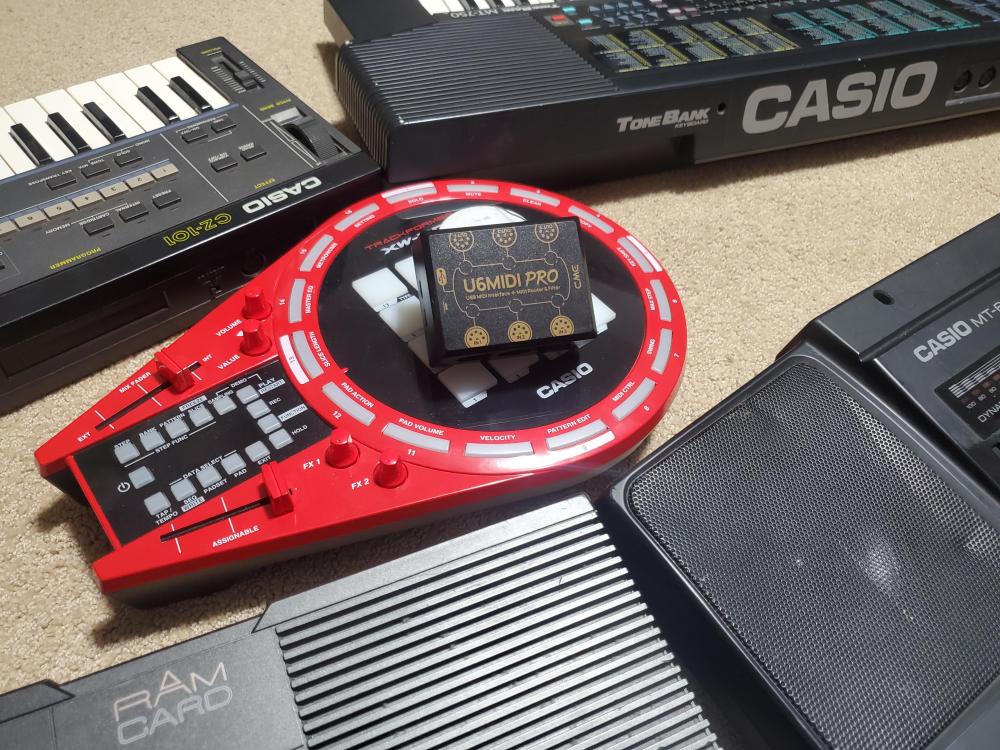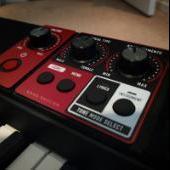All Activity
- Today
-
Hello Brad ! it works!! thanks for your advice have a nice day! sandor
- Yesterday
-
A small update in my quest to get my PD1 talking with other synths/ keyboards/ Casios! I wanted to be able to use the PD1's 4 track midi sequencer to trigger other Casios, especially some of the smaller and lower end Casios that came equipped with MIDI. I also wanted to be able to use it to trigger up to 4 other devices simultaneously. However, I encountered limitations due to the few MIDI options available on some small Casios, such as no MIDI through. Also there are limitations with selecting MIDI channel receive in my MT750 and MT640 as they only have two MIDI modes - one where it defaults to receiving MIDI on Channel one, and two where it receives MIDI on the first four MIDI channels (basically a multi-timbral mode). Unfortunately, you can't specify/ select the single MIDI channel number for it to receive data. Meanwhile, my CZ101 and HT700 CAN select the MIDI receive channel from 1 to 16, but like the CZ101 and HT700, they too do not have MIDI through. If I wanted to send MIDI from my PD1 to my MT750 and MT640, they could only be set to MIDI channel 1, and as with the CZ101 and HT700, I couldn't trigger more than one keyboard as none of these small MIDI equipped Casios have MIDI through sockets. So what might be the solution to be able to simultaneously trigger 2 or more devices? I did a bit of research and discovered a programmable CME MIDI interface called the U6 MIDI Pro. It has customizable MIDI routing via the free software and will allow you to send up to three independent channels of MIDI data to three independent MIDI out sockets (it can also receive up to three MIDI channels via MIDI in sockets). By connecting it to my computer, along with my PD1 via USB, I can program the CME programmable MIDI interface to route the PD1's MIDI data to the three MIDI ports of the U6 MIDI Pro. I've already configured the U6 MIDI Pro and have managed to get it working with two of my small MIDI Casios making them successfully and simultaneously receive data from the XW-PD1! However, with an extended trip to the UK needing lots of preparation and planning fast approaching, this is as far as I got and I had to shelve this little project until I get back home to the USA. Still, I wanted to share a progress update, and when I return to the UK in early July I will try and make a video showing all the above in action.
-

Casio PX-310 Keyboard not showing up on ProTools
Mike Martin replied to Emma7123's topic in General Casio Discussion
@Emma7123 the USB port on the PX-310 is not supported by a modern Macbook. That piano is 18 years old and computers have changed a bit. The PX-310 has a 5pin MIDI port which would work with your Mac if you add a third part USB MIDI interface. Something like this would do the trick.- 1 reply
-
- 2
-

-
Casio PX-310 Keyboard not showing up on ProTools
Emma7123 posted a topic in General Casio Discussion
Hi, I have a PX-310 Keyboard connected to my MacBook Air, and the lead includes a small interface. However, when I go to MIDI Input Devices on ProTools nothing comes up. Would appreciate some help on how to connect the two. Thanks :) -
Emma7123 joined the community
-
Availability of a new AC7 Editor program
Mclandy replied to Mclandy's topic in General CT-X Discussion
Actually, CT-X does support parameters in the AC7 file to tune drum notes, both EQ and some effects. I haven't had time to implement and test the configuration controls for it yet. It gets a little complicated being on an individual note basis. Do you use that a lot on your MZ-X? I could try to add it when I get some time to work on it. I agree, DSP as part of the Rhythm file, without having to create a custom tone, is a nice feature. -
Yes, when I first got it and was playing it, I didn't realize what the mod wheel was set to and the grand piano sound was all, well, modulated. I thought there was something wrong and did a factory reset, then realized it was just the mod wheel after that didn't fix it. Long story short, I have done a factory reset recently.
-
FHDHGNGN joined the community
-
Unfortunately it's starting to sound like the knobs may be faulty. K1 K2 K3 should be changing values on the main screen. That tells me it's probably a knob issue. Just to be completely sure, have you tried performing a factory reset in the system settings menu?
-
GRAHAMD joined the community
-
I set one to reverb, one to metronome volume. and the third i left as an eq gain. Just trying to learn the keyboard for now so I was just playing around with things. Metronome volume does not change when turning the knob. Reverb doesn't change when turning its knob. The main screen shows K1: 27, K2: 127, etc and the numbers don't change when I turn the knobs. I checked, and i'm on firmware 1.15
-
What did you set the knob target to function as?
-
bdcooke joined the community
-
I just bought a used 560, and I set the control knob functions to what I want. However, turning the knobs doesn't affect the number displayed (or the resulting setting). Since this is a new piano for me, I'm not sure if I'm doing something wrong or if there is a defect on this piano? Anyone have any ideas?
-
Hi sorry its taken a while to reply to your self and Brad but have been setting up reaper to play my backing tracks through the keyboard speakers all working fine so thanks for all your help. Kind regards Chris. 😃
-
KlavierKreationStudios joined the community
-
Interesting, based on my recent post in another thread in this subforum, that the other user having difficulty was also using a relatively recent Samsung phone (tarab, I had the same problems from an S22 -- I get the message that it's connected, I can DELETE lyric tones from the keyboard via the lyric app, but hitting Transfer, with very rare exceptions, has done nothing). I have a pretty new Lenovo tablet - I'll try it and report back in both threads.
-
Desmond Isaacs joined the community
-
Genivaldo joined the community
- Last week
-
That sounds like a coherent explanation. btw. the FZ1 has at least exactly the same circuit for key scanning including the MSM6200 processor. In any case, the sampler only has 8 voices 🙂 But that's exactly what I suspect. I would rule out a fault with all the devices. I'm just always irritated that some people (on Facebook and in other forums) have replied to me that their CZ1 was playable in 16 voices, or that they remembered that it was. I rather suspect that this is not correct and that they are misremembering. But it's not a serious problem with a 40 year old synth anyway 😉 And I still have a VZ-1 in the cellar, packed away in the box. I think it can definitely do more than 8 voices - but maybe I'm remembering it just as wrong. Maybe I should get it out and plug it in for a test. But in the service manual the whole key scanning part looks completely different.
-

Availability of a new AC7 Editor program
Silvano Silva replied to Mclandy's topic in General CT-X Discussion
Congratulations Mclandy. I tested the program and it worked well to change Drum parts. I believe that the CT-X manages the same way that the MZ-X manages the Drum Kits. THE DRUMS SOUNDS ARE ON THE SAME MEMORY PAGE OF BOTH KEYBOARDS. The difference is that in the MZ-X the editing function is unlocked and you were able to unlock it via software. To be complete, it would be enough to change the tuning of each drum note, but that would be too demanding. As for editing DSP in Ritmo without going through separate editing of a tone, it surprised me. This opens up possibilities of creating a Rhythm with the onboard DSP without having to edit a tone from the outside and remap it. I was very happy to have a tool that allows me to create more freely on the CT-X and soon I will create new Rhythms with the new functions thanks to you. -
Johny Payet joined the community
-
a question regarding CZ-1 (3000/5000..) / Polyphony
pianokeyjoe replied to Helfried's topic in CZ Series
From my hacking of Casios experience in the past, The key scanner/matrix chip in most Casio keyboards of the 1980s had a maximum of 8 notes polyphony play possible.. I do not think this was a fault but a design feature back then. The sound engine was capable of 16 note poly via a midi controller or sequencer or some other device capable of more polyphony but as my old MT240 keyboard goes, it only has 49 notes keyspan even in midi mode, and 4 part midi channel play via midi tone module mode, but the keybed in the MT240 has a 10 note poly play capacity. So limitations in the design of the keyboard are at play. Casiotone all the way back to the late 70's had 8 note poly play sound engine based keyboards and that seemed to be the limit with the key scan/matrix ic and supporting circuitry. I do not know if the FZ1 and VZ1 had this limitation however.. As those 2 keyboards were made with a very different keybed(both units had the same semi weighted synth bed), and were made in 1987/88? The CPS line of electric pianos did have more polyphony at the keys but again.. the key matrix is different even from the CZ1 which is velocity sensing. I could be wrong there but I say to you, the limit is down to the keybed ic chip and circuit design, not the internal sound engine. Some one else with more in depth electronic experience will be able to delve in deeper and better explain this. -
lipelord joined the community
-
It sounds like something on your Android device may be interrupting the process. Do you have other MIDI apps installed? Have you tried installing a different file manager other than the stock Samsung app? There is another option other than a cable, but it may still require the file manager to open. The "transfer to other" button will save the file to an Android storage location, can be a USB flash drive. The keyboard can load a lyric file from the flash drive.
-
Sedric joined the community
-
Yeah that's the thing. I hit Transfer and the screen just refreshes. Nothing, no choices. I got it to work one more time after disconnecting everything and restarting the phone and the keyboard, then it was back to the same behavior On my GalaxyS22, when it did work, the file manager showed the keyboard and what seemed to be a directory under it. Does it matter what level I save the lyric to? Do I need to spend $13 on a cable rather than $6?
-
vslrepower changed their profile photo
-
Yes. If you're already familiar with assigning knobs to various functions, it is in the list of target parameters called "audio volume". It was added with firmware update 1.10, so if do not see audio volume, check your firmware version in system settings.
-
Can that volume of the recorded files be assigned to one of the sliders within a stage setting or otherwise? Thanks!
-
What exactly are you seeing after pressing transfer? If your phone/tablet has a file manager app installed such as "Files by Google" or other file manager apps, the phone/tablet should automatically open the file manager app. In the file manager, you should find a menu to select CT-S1000V as the save destination. This should be the case each time you transfer, not only the first time.
-
Note that I un-installed the lyric app and reinstalled, and It worked....once only. As soon as I tried to send another (long or short) lyric, I no longer got the prompt to select.a destination for the file.
-
I think I missed selecting the keyboard as the save destination on my first attempt, and I cannot get the app to prompt me for the choice again. I can DELETE with no problem (tested by deleting HAPPY CHRISTMAS) but transfer is failing. Any idea how to reset? This is Android btw
-
Would be interesting to have some filters like LPF for system effect or a saturation / grainy ring modulator.
-
Availability of a new AC7 Editor program
Mclandy replied to Mclandy's topic in General CT-X Discussion
@Silvano Silva, Yes, this program allows you to substitute specific drum notes for a drum sound in another kit, by using a feature in the CT-X keyboards. I am pretty sure this feature is exclusive to CT-X keyboards, so it will not work on your MZ-X (although on MZ-X, you can create "User" drum kits which include whatever sounds you want, isn't that correct?). But as you say, you can for example assign a note in Standard Kit 1 to play another drum sound from Dance Set 1, and that allows you to create and play improved rhythms on CT-X. It's actually kind of nice that this is a feature of the Rhythm file, because then there is no need to create a special User drum tone file to go with it. Please note my earlier posts about support for non-CTX keyboards. The program only has built-in Tone and Drum lists for the CT-X models, so AC7 files from an MZ-X keyboard may contain quite a few "unknown" MZ-X Tone names, or some may be labeled slightly differently, and of course the Drum kits are somewhat different, too. But if someone wants to create an alternate Patch file for MZ-X, then the program will support it. -

Ap 650 vs Ap710
Mike Martin replied to Mitgat's topic in Celviano AP-x50, x60 / Privia PX-x50, x60 series
The AP-710 has the Berlin Grand (Bechstein) as well as the Vienna Grand (Bösendorfer), neither of these are in the AP-650. The Hamburg is dramatically improved over the AP-650. The speaker system on the AP-710 is also improved over the AP-650.- 1 reply
-
- 2
-





